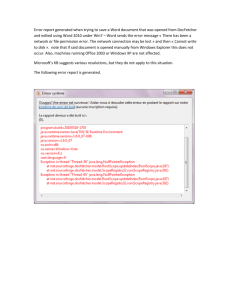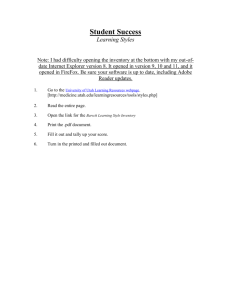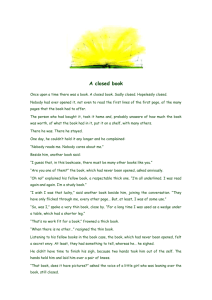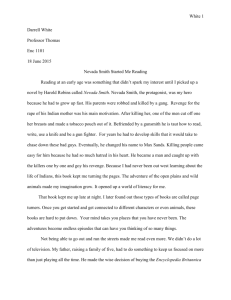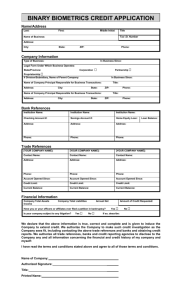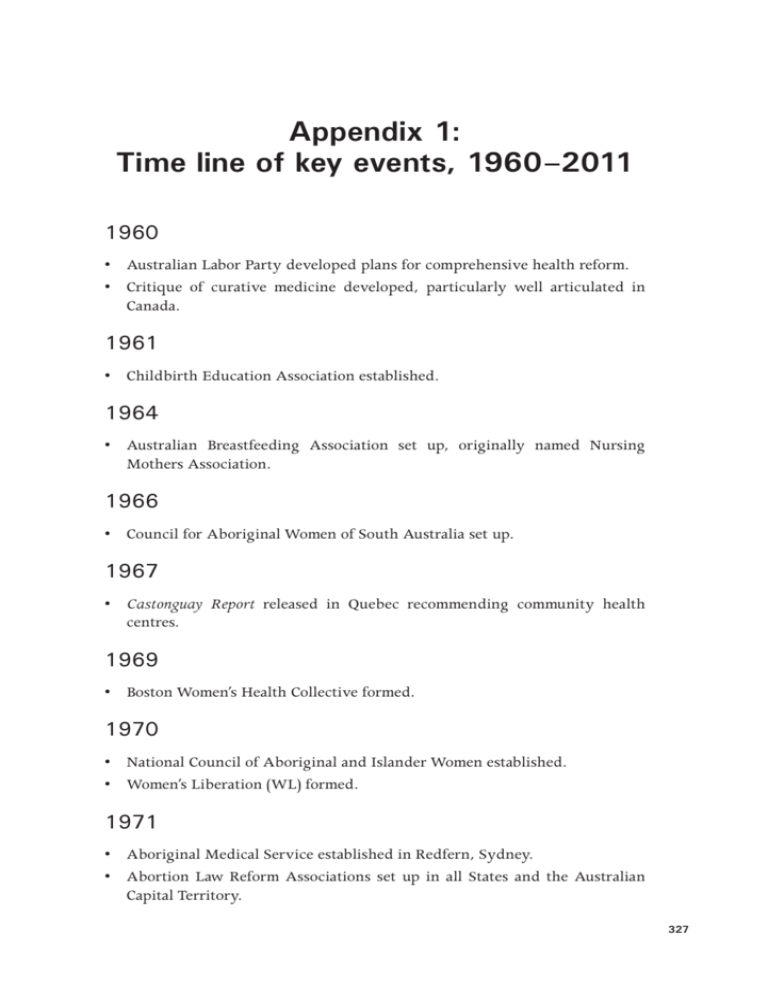
Appendix 1:
Time line of key events, 1960–2011
1960
• Australian Labor Party developed plans for comprehensive health reform.
• Critique of curative medicine developed, particularly well articulated in
Canada.
1961
• Childbirth Education Association established.
1964
• Australian Breastfeeding Association set up, originally named Nursing
Mothers Association.
1966
• Council for Aboriginal Women of South Australia set up.
1967
• Castonguay Report released in Quebec recommending community health
centres.
1969
• Boston Women’s Health Collective formed.
1970
• National Council of Aboriginal and Islander Women established.
• Women’s Liberation (WL) formed.
1971
• Aboriginal Medical Service established in Redfern, Sydney.
• Abortion Law Reform Associations set up in all States and the Australian
Capital Territory.
327
Reaching for Health
• Australian feminists wrote sex information pamphlet, branded obscene by
newspapers.
• First edition of Our Bodies, Ourselves published.
• Quebec began to set up Province-wide network of community health centres.
1972
• Children by Choice, Brisbane, family planning and abortion information
service set up.
• Election of the Whitlam Labor Government.
• Health Commission Act (NSW) paved the way for community health centres.
• Joint Women’s Action set up in Canberra (Aboriginal and non-Aboriginal
women).
• The Body Politic formed in Adelaide.
• Women’s Electoral Lobby (WEL) established in Melbourne.
• Women’s Abortion Action Coalition set up in Sydney.
1973
•
•
•
•
•
•
•
•
Control formed in Sydney; began abortion referral service.
Migrant Women’s Association established in Sydney.
Murawina Aboriginal Preschool and Women’s Hostel set up in Sydney.
WL organised speak-outs in Sydney and Melbourne; health emerged as
major issue.
Women’s Abortion Action Campaign set up in Brisbane and Adelaide.
Women against Rape formed in Melbourne.
Women’s Commission held in Sydney; health emerged as a major issue.
Women’s Health Collective formed in Melbourne.
1974
•
•
•
•
•
•
•
•
328
Abortion Information service opened in Perth.
Adelaide Women’s Shelter opened, also known as Naomi Women’s Shelter.
Blacktown Community Cottage opened in Sydney.
Bonnie Women’s Shelter opened in Western Sydney.
Brisbane Rape Crisis Centre opened.
Brisbane Women’s House Health Centre opened.
Canberra Rape Crisis Centre opened.
Canberra Women’s Refuge opened.
Appendix 1: Time line of key events, 1960–2011
•
•
•
•
•
•
•
•
•
•
•
•
Collingwood Women’s Health Centre opened in Melbourne.
Elsie Women’s Refuge opened in Sydney.
Hobart Women’s Shelter opened.
Hunter Region Working Women’s Centre opened; now Hunter Women’s
Centre.
Lalonde Report released in Canada.
Launceston Women’s Shelter opened in Tasmania.
Leichhardt Women’s Community Health Centre established in Sydney.
Liverpool Women’s Health Centre opened in Sydney; later participated
in establishing Rosebank Sexual Assault Service, Dympna House, incest
counselling service and others.
Nardine Women’s Shelter opened in Perth.
Sydney Rape Crisis Centre opened; now NSW Rape Crisis Centre.
Women’s Health and Community Centre opened in Perth.
Women’s Liberation Halfway House opened in Melbourne.
1975
• Aboriginal Women’s Centre set up in Darwin.
• Alice Springs Women’s Centre, primarily a refuge, opened in Northern
Territory.
• Darwin Women’s Health Centre opened.
• Dismissal of the Whitlam Labor Government; election of the Fraser Coalition
Government.
• First National Women’s Health Conference held in Australia in Brisbane.
• Hindmarsh Women’s Health Centre opened in Adelaide.
• Industrial Health Group formed at Liverpool Women’s Health Centre.
• Women’s Health and Community Centre Rape Crisis Centre opened in Perth.
• Women’s House Health Centre opened in Brisbane.
• Working Women’s Centre set up in Melbourne.
1976
•
•
•
•
Adelaide Rape Crisis Centre opened.
Central Coast Women’s Health Centre opened in Gosford, New South Wales.
Christies Beach Women’s Shelter opened in South Australia.
Draft Bill on Rape and Other Sexual Offences, written by Dr Jocelynne Scutt
for WEL, influenced State legislation.
329
Reaching for Health
•
•
•
•
Marrickville Women’s Refuge opened in Sydney.
Marty House opened in Sydney for women with substance abuse issues.
Sexual Assault Resource Centre opened in Perth.
Foundation of Rehabilitation with Aboriginal Alcohol Related Difficulties set
up by Aboriginal women.
1977
• Australian Council of Trade Unions (ACTU) adopted Working Women’s
Charter.
• Alice Springs Women’s Health Centre opened in the Northern Territory.
• Bankstown Women’s Health Centre opened in Sydney.
• Bessie Smyth feminist abortion clinic opened in Sydney.
• Bringa Women’s Refuge opened in Dee Why, Sydney.
• Cawarra Women’s Refuge Aboriginal Corporation established in New South
Wales.
• Powell Street Clinic set up in Homebush, Sydney.
• Women in Industry, Contraception and Health (now Multicultural Women’s
Health Centre) established in Melbourne.
• Women’s Committee established within ACTU.
• Women’s Coordination Unit established in NSW Premier’s Department.
• Women’s Health Care House opened in Perth.
• Women’s Pregnancy Advisory and Abortion Referral Service set up in
Brisbane.
• Workers Health Action Groups formed from this year onwards.
• Workers Health Centre, Lidcombe, Sydney, established.
1978
•
•
•
•
•
•
330
ACTU sponsored Working Women’s Charter Conference.
Anne Women’s Shelter opened in South Australia.
Geelong Rape Crisis Centre opened in Victoria.
Task Force to Inquire into Sexual Violence set up in New South Wales.
Warrina Women’s Refuge opened in Coffs Harbour, NSW.
Migrant Women’s Refuge established in Melbourne.
Appendix 1: Time line of key events, 1960–2011
1979
• Cawarra Aboriginal Refuge opened in Sydney.
• Elizabeth Hoffman House emergency accommodation and support for
Aboriginal women and their children opened in Melbourne.
• Sexual Assault Service, Queen Victoria Medical Centre, opened in Melbourne.
• Wagga Wagga Women’s Health and Support Centre opened in New South
Wales.
• Working Women’s Centre established in South Australia.
• Working Women’s Centre opened in Adelaide.
1980
• Adelaide Women’s Community Health Centre opened.
• Dawn House, providing accommodation and support services, opened in
Darwin.
• Ngaanyatjarra Pitjantjatjara Yankunytjatjara Women’s Council established in
Central Australia to provide health and human services.
1981
•
•
•
•
•
•
•
•
•
ACTU decision to support women’s right to free, safe, legal abortion.
Alice Springs Women’s Shelter opened in Northern Territory.
Blue Mountains Women’s Health Centre opened in New South Wales.
Domestic Violence Committee convened by Premier’s Department of Victoria.
Women’s Health and Information Resource and Crisis Centres Association
(WHIRCCA) established.
Wirraway Women’s Housing Co-Operative opened in Moree, New South
Wales.
Women’s Community House opened in Alice Springs, Northern Territory.
Women’s Place, for homeless or intoxicated women, opened in Sydney.
Refuge Ethnic Workers Program set up in Melbourne.
1982
•
•
•
•
Federation for Aboriginal Women set up in Victoria.
Louisa Lawson House opened in Sydney.
Right to Choose Coalition set up by WEL.
Women’s Health Resource Collective, later Women’s Health Information
Resource Collective, opened in Melbourne.
331
Reaching for Health
• Working party established to develop women’s health policy.
• Brisbane Women’s Community Health Centre opened.
1983
• Election of the Hawke Labor Government.
• Elizabeth Women’s Health Centre opened in South Australia.
• First woman elected to the ACTU Executive; Working Women’s Policy
developed.
• Health in the Workforce Factory Project set up in Sydney.
• The Women’s Cottage set up, Hawkesbury District, Sydney.
• Toora Single Women’s Shelter, now Toora Women, opened in the Australian
Capital Territory.
• Women’s Advisory Council established in Western Australia with a focus on
health.
• Mookai Rosie Bi-Bayan, Aunty Rosie’s Place, providing services for rural and
remote Aboriginal women and children, opened in Cairns, Queensland.
1984
• Western Women’s Council set up in Wilcannia, New South Wales.
• Jilimi, now Waminda Aboriginal Women’s Health Centre, opened in Nowra,
New South Wales.
• Immigrant Women’s Support Service opened in Brisbane.
• Migrant Women’s Lobby Group established in Adelaide.
• Illawarra Women’s Health Centre opened in New South Wales.
• Elisabeth Women’s Community Health Centre opened in South Australia.
• Southern Women’s Health and Community Centre opened in South Australia.
• Dale Street Women’s Community Health Centre opened in South Australia.
• Refuge Ethnic Workers Program opened in Victoria.
• SA Coalition for Workers Health Action established.
• First Australian Women’s Health Adviser, Liz Furler, appointed in South
Australia.
• Women’s Health Policy Review Committee set up in New South Wales.
• Report of the Working Party on Women’s Health Policy released in South
Australia.
• Report on domestic violence in Tasmania released.
• Domestic Violence Incest Resource Centre established in Victoria.
332
Appendix 1: Time line of key events, 1960–2011
1985
• Second National Women’s Health Conference held in Adelaide.
• Crisis Intervention Unit set up in Department of Community Services,
Tasmania.
• Darwin Counselling Group established to provide sexual assault services.
• Domestic Violence Council established in South Australia.
• Immigrant Women’s Resource Centre opened in Sydney.
• Immigrant Women’s Speakout Association formed in Sydney.
• Migrant Women’s Support and Accommodation Service opened in Adelaide.
• Multicultural Women’s Health Centre opened in Fremantle, Western
Australia.
• Shoalhaven Women’s Health Centre opened in New South Wales.
• Southwest Women’s Child Sexual Assault Resource Centre, later Rosebank,
opened in Sydney.
• Task Force on Domestic Violence established in Western Australia.
• Women in Trade Unions Network formed in Brisbane.
• Women’s health ‘policy in action’ commenced.
• Women’s Health Unit established in New South Wales and, thereafter, in
most jurisdictions.
1986
• Albury–Wodonga Women’s Health Centre opened in Albury, New South
Wales.
• Australian Women’s Health Network established.
• Break the Silence, task force report on domestic violence, released in Western
Australia.
• Central West Women’s Health Centre opens in Bathurst, New South Wales.
• Coffs Harbour Women’s Health Centre opened in New South Wales.
• Domestic Violence Prevention Council set up in the Australian Capital
Territory.
• Dympna Accommodation Program opened in Sydney.
• Goldfields Women’s Health Centre opened in Western Australia.
• Migrant Women against Incest Network established in New South Wales.
• Ministerial Women’s Health Working Party established in Victoria.
• Multicultural Women’s Resource Centre set up in Broken Hill, New South
Wales.
333
Reaching for Health
• NHMRC Working Party on Homebirths and Alternative Birth Centres
established.
• NSW Women’s Refuge Resource Centre established.
• Queensland Women’s Health Network established.
• Sexual Assault Referral Centre opened in Darwin.
• Sexual Assault Support Service opened in Hobart.
• Women’s Centre opened in Cairns, Queensland, to provide sexual assault
crisis services.
• Working Party on Women’s Health established in Western Australia.
1987
• Australian Health Ministers Advisory Council (AHMAC) Subcommittee on
Women and Health created.
• Australian College of Midwives Incorporated established.
• Blacktown Women’s and Girls’ Health Centre opened in Sydney.
• Campbelltown Women’s Health Centre, also known as WILMA, opened in
Sydney.
• CASA House Centre against Sexual Assault opened at Royal Women’s
Hospital, Melbourne.
• Congress Alukura women’s health, maternal and child health centre opened
in Alice Springs, Northern Territory.
• Domestic Violence Prevention Unit set up in South Australia.
• Hobart Women’s Health Centre opened.
• Immigrant Women’s Health Service opened in Fairfield and Cabramatta,
Sydney.
• Lismore and District Women’s Health Centre opened in New South Wales.
• National Domestic Violence Education Campaign undertaken by the Office of
the Status of Women (OSW).
• Penrith Women’s Health Centre opened in Western Sydney.
• Regional network of sexual assault services set up in Victoria.
• Ruby Gaea, providing sexual assault services, opened in Darwin.
• Special Adviser to the Commonwealth Health Minister, Liza Newby,
appointed.
• Why Women’s Health, Victorian Women Respond working party report
released.
334
Appendix 1: Time line of key events, 1960–2011
1988
• Beyond These Walls, report of the Task Force on Domestic Violence,
Queensland, released.
• Domestic Violence Crisis Service set up in the Australian Capital Territory.
• Domestic Violence Resource Centre opened in Queensland.
• Freedom from Fear, community education campaign on domestic violence,
conducted in Western Australia.
• Geraldton Sexual Assault Referral Centre opened in Western Australia.
• Gloria Brennan ATSI Women’s Centre opened in East Perth.
• Healthsharing Women established in Victoria.
• Key Centre for Women’s Health in Society, now the Centre for Women’s
Health Gender and Society, founded at Melbourne University.
• Sexual Assault Counselling Service opened in Alice Springs, Northern
Territory.
• Waratah Support Centre for sexual assault and domestic violence opened in
Bunbury, Western Australia.
• Women’s Health Service for the West opened in Victoria.
1989
• Alternative Birthing Services Program commenced.
• Domestic Violence (Family Protection) Act (Qld) enacted.
• First National Women’s Health Policy and National Women’s Health Program
launched.
• Integrated Family Violence Networks established in Victoria.
• Laurel House opened in Launceston, Tasmania.
• Maternity Coalition established.
• Patricia Giles Centre, offering services for GLBTIQ people, opened in Perth.
• Whitfords Women’s Health Centre, now Women’s Healthworks, opened in
Western Australia.
1990
• Canberra Women’s Health Centre, now Women’s Centre for Health Matters,
opened.
• Cumberland Women’s Health Centre opened in Sydney.
• Domestic Violence Council established in Queensland.
• National Committee on Violence against Women established.
335
Reaching for Health
• Perth Women’s Centre opened.
• Townsville Women’s Community Health Centre opened in Queensland.
• Women’s Health Development in the ACT released in draft form.
1991
•
•
•
•
Domestic Violence Strategic Plan released in New South Wales.
Geraldton Women’s Health Centre opened in Western Australia.
Rockhampton Women’s Health Centre opened in Queensland.
Wide Bay Women’s Health Centre opened in Queensland.
1992
•
•
•
•
•
•
•
•
Brisbane Rape and Incest Survivors Support Centre opened.
Edith Edwards Women’s Centre, refuge, opened in Bourke, New South Wales.
Ipswich Women’s Health Service opened in Queensland.
Logan Women’s Health Centre opened in Queensland.
National Strategy on Violence against Women introduced.
North-East Women’s Health Service opened in Victoria.
Northern Territory Women’s Health Policy released.
Women’s Health Strategy Unit established in Northern Territory.
1993
336
• Eastern Goldfields Sexual Assault Research Centre opened in Western
Australia.
• Hedland Women’s Health Service opened in Western Australia.
• Goulburn North-Eastern Victoria Women’s Health Service opened.
• Mirrabooka Multicultural Women’s Health Centre opened in Western
Australia.
• Non-English Cultural Background Women’s Health Reference Group formed
in Queensland.
• Queensland Women’s Health Policy launched.
• Rockingham Women’s Health Service opened in Western Australia.
• Women’s Health Prevention of Violence against Women Program set up in
Queensland.
• Women’s Health Victoria formed through amalgamation of Healthsharing
Women and the Women’s Health Information Resource Collective.
• Yarrow Place, incorporating the Adelaide Rape Crisis Centre, opened.
• Yorgam Aboriginal Corporation, providing support services for people who
have experienced violence, opened in East Perth.
Appendix 1: Time line of key events, 1960–2011
1994
•
•
•
•
•
•
•
Gladstone Women’s Health Centre opened in Queensland.
Gosnells Women’s Health Service opened in Western Australia.
Gympie and District Women’s Health Centre opened in Queensland.
Northern Territory Domestic Violence Strategy released.
South Australian women’s health centres lost their independence.
Tasmanian Women’s Health Policy launched.
Working Women’s Centres set up in Queensland and Tasmania.
1995
• Third AWHN National Women’s Health Conference, Canberra.
• Women’s Health Australia longitudinal study on women’s health commenced.
• Working Women’s Centre set up in Northern Territory.
1996
• Election of the Howard Coalition Government.
• New Directions in Reducing Violence against Women released in New South
Wales.
1997
• Immigrant and Refugee Women’s Coalition opened in Victoria.
• Partnerships against Domestic Violence introduced.
1998
• Abortion removed from the Criminal Code of Western Australia, replaced with
small section making it illegal for anyone other than a medical practitioner to
perform an abortion.
• A Strategic Framework to Advance Women’s Health released in New South
Wales.
• Family Violence Intervention Program commenced in the Australian Capital
Territory.
• Family Violence Prevention Legal Service initiated by ATSIC.
• Task Force on Sexual Assault and Rape set up in Tasmania.
337
Reaching for Health
1999
• National Indigenous Family Violence Grants Program introduced.
2000
• Women’s Health NSW established (formerly WHIRCCA).
2001
•
•
•
•
Australian Centre for the Study of Sexual Assault established.
Fourth AWHN National Women’s Health Conference, Adelaide.
National Initiative to Combat Sexual Assault introduced.
Women’s Health and Well-Being initiatives paper released in South Australia.
2002
• Abortion removed completely from the Criminal Code of the Australian
Capital Territory.
• Aboriginal Family Violence Prevention and Legal Service opened in Victoria.
• Four-year Women’s Health and Well-Being Strategy released in Victoria.
• National Maternity Action Plan developed, led by Maternity Coalition.
• Women’s Health Outcomes Framework released in New South Wales.
• Women’s Safety Strategy introduced in Victoria.
2003
• BreaCan established in Victoria.
• Queensland Centre for the Prevention of Domestic and Family Violence
established.
2004
•
•
•
•
Family Violence Act (Tasmania) enacted.
Safe at Home strategy commenced in Tasmania.
Violence against Women, Australia Says No campaign commenced.
Howard Government attempted to exclude women’s health from Public
Health Outcomes Funding Agreements (PHOFAs).
2005
338
• Fifth AWHN National Women’s Health Conference, Melbourne.
• New Women’s Health Policy launched in South Australia.
Appendix 1: Time line of key events, 1960–2011
• Reforming the Family Violence System in Victoria released.
• The Health and Well-Being of Northern Territory Women: From the desert to
the sea released.
• Women’s Health Services formed from the amalgamation of Women’s Health
Care House and Women’s Health Services, Perth.
• Women’s Safety Strategy released in South Australia.
• Yinganeh Aboriginal Women’s Refuge opened in Lismore, New South Wales.
2006
• Northern Territory Emergency Response introduced.
• Reproductive Choice Australia, a coalition of 20 NGOs, established.
2007
•
•
•
•
Domestic and Family Violence Act (Northern Territory) passed.
Rudd Labor Government elected.
Partners in Prevention set up in Victoria, funded by VicHealth.
Australian Labor Party announces commitment to develop Second National
Women’s Health Policy.
2008
•
•
•
•
•
•
•
•
•
•
•
•
Abortion removed completely from the Criminal Code of Victoria.
Construction of a new ACT community health centre announced.
Construction of a new ACT Women’s and Children’s Hospital announced.
Family Violence Protection Act (Victoria) passed.
National Council to Reduce Violence against Women and their Children
appointed.
National Health and Hospitals Reform Commission established.
National Maternity Services Review established.
National Preventive Health Taskforce established.
New South Wales Domestic and Family Violence Strategic Framework
released.
WHO Social Determinants of Health Report released.
Women’s Health Services Plan developed in the Australian Capital Territory.
Women’s Health: The new national agenda published by AWHN.
339
Reaching for Health
2009
• A healthier future for all Australians, report of NHHRC, released.
• Australia: The healthiest country by 2020, report of National Preventive
Health Taskforce, released.
• Domestic Violence Death Panel, chaired by Coroner, set up in New South
Wales.
• Domestic Violence Death Review Panel established in Queensland.
• For Our Sons and Daughters, 2009–2014, domestic violence strategy,
Queensland, released.
• Pro-Choice Queensland established.
• Review report, Improving Maternity Services in Australia, released.
• Time for Action: The National Council’s plans for Australia to reduce violence
against women and their children, 2009-2021
2010
•
•
•
•
•
Interim Women’s Health Plan, 2009–2011, released in New South Wales.
Modified maternity care arrangements began operation.
National Maternity Services Plan endorsed by Australian health ministers.
Second National Women’s Health Policy released.
Sixth AWHN National Women’s Health Conference, Hobart.
2011
• National Disability Strategy developed after consultations.
• National Plan to Reduce Violence against Women and their Children
launched.
340

